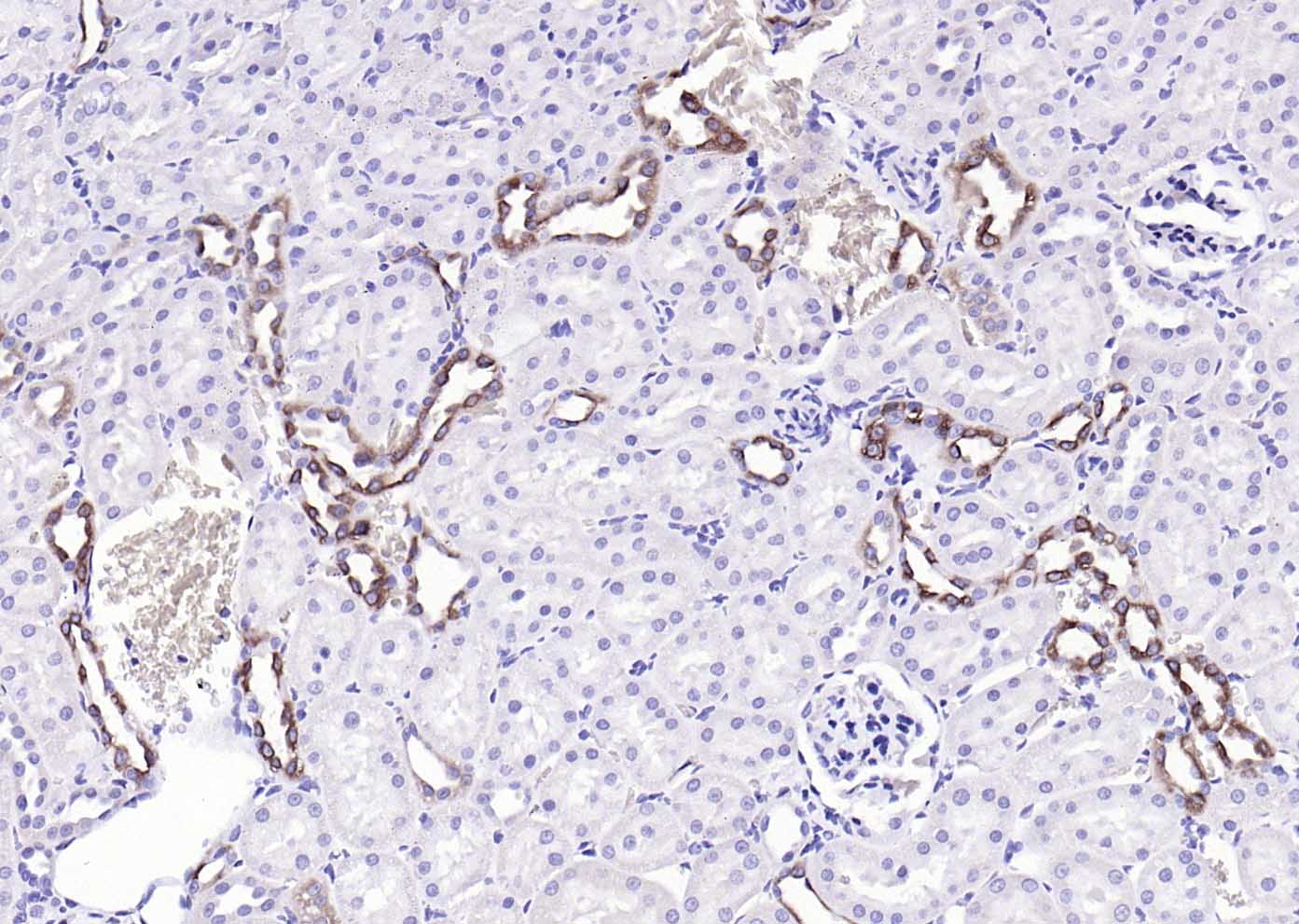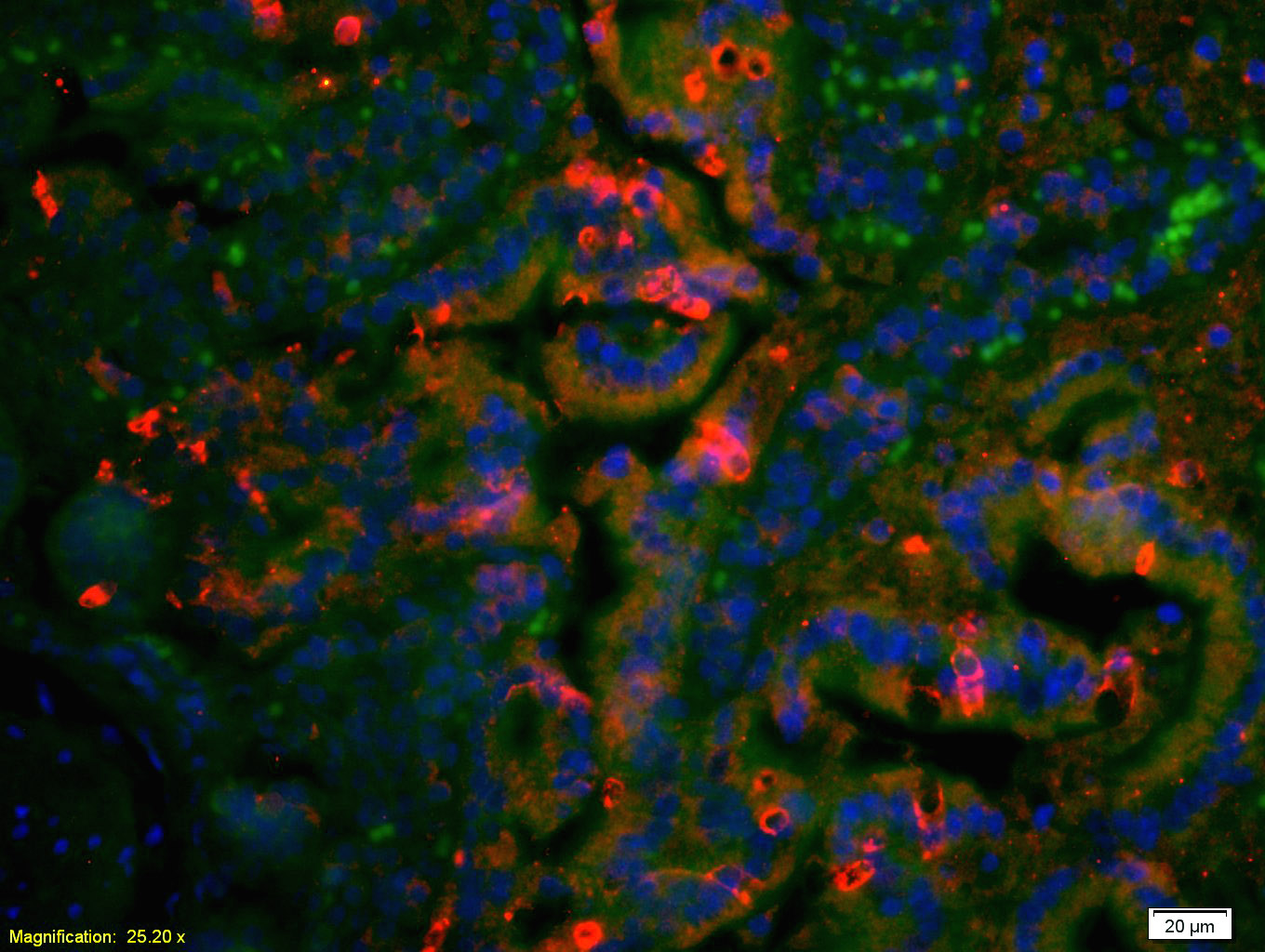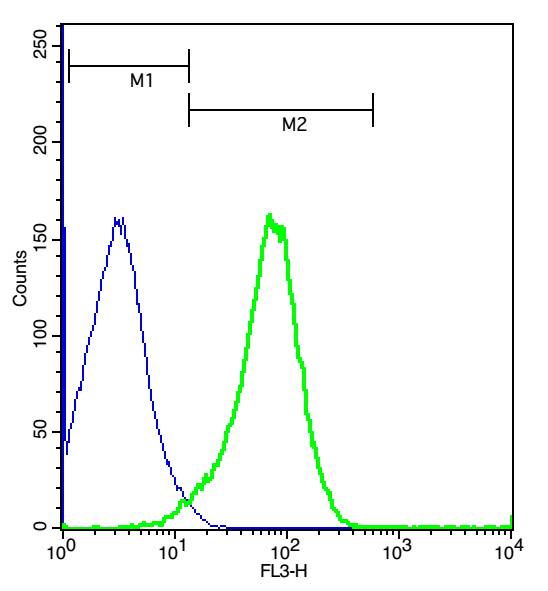
Rabbit Anti-AT2R antibody
AG2S; Agtr 1; Agtr1; AGTR1_HUMAN; Agtr1a; AGTR1B; Ang II; Angiotensin II receptor type 1; Angiotensin II type 1 receptor; Angiotensin II type-1 receptor; Angiotensin receptor 1; Angiotensin receptor 1B; AT 1B; AT 1r; AT-1B; AT-1r; AT1; At1a; AT1AR; AT1B;
View History [Clear]
Details
Product Name AT2R Chinese Name 血管紧张素Ⅱ受体1抗体 Alias AG2S; Agtr 1; Agtr1; AGTR1_HUMAN; Agtr1a; AGTR1B; Ang II; Angiotensin II receptor type 1; Angiotensin II type 1 receptor; Angiotensin II type-1 receptor; Angiotensin receptor 1; Angiotensin receptor 1B; AT 1B; AT 1r; AT-1B; AT-1r; AT1; At1a; AT1AR; AT1B; AT1BR; AT1R; AT2R1; AT2R1A; AT2R1B; HAT1R; Type 1 angiotensin II receptor; Type 1B angiotensin II receptor; Type-1 angiotensin II receptor. literatures Research Area Tumour Cardiovascular Cell biology immunology vascular endothelial cell Immunogen Species Rabbit Clonality Polyclonal React Species Human, Mouse, Rat, Applications ELISA=1:5000-10000 IHC-P=1:100-500 IHC-F=1:100-500 IF=1:100-500 (Paraffin sections need antigen repair)
not yet tested in other applications.
optimal dilutions/concentrations should be determined by the end user.Theoretical molecular weight 41kDa Cellular localization The cell membrane Form Liquid Concentration 1mg/ml immunogen KLH conjugated synthetic peptide derived from human AT2R: 151-250/359 <Extracellular> Lsotype IgG Purification affinity purified by Protein A Buffer Solution 0.01M TBS(pH7.4) with 1% BSA, 0.03% Proclin300 and 50% Glycerol. Storage Shipped at 4℃. Store at -20 °C for one year. Avoid repeated freeze/thaw cycles. Attention This product as supplied is intended for research use only, not for use in human, therapeutic or diagnostic applications. PubMed PubMed Product Detail Angiotensin II (Ang II) is an important physiological effector of blood pressure and volume regulation through vasoconstriction, aldosterone release, sodium uptake and thirst stimulation. Although Ang II interacts with two types of cell surface receptors, AT1 and AT2, most of the major cardiovascular effects seem to be mediated through AT1. Molecular cloning of the AT1 protein has shown it to be a member of the G protein-associated seven transmembrane protein receptor family. Ang II treatment of cells results in activation of several signal transduction pathways as evidenced by tyrosine phosphorylation of several proteins and induction of others. PLC?is phosphorylated after 30 seconds of treatment with Angiotensin II, indicating this as an early signal transduction event. Ang II treatment also stimulates phosphorylation of Shc, FAK and MAP kinases, and induces MKP-1, indicating stimulation of growth factor pathways. Ang II stimulation through AT1 has been shown to activate the JAK/Stat pathway involving a direct interaction between JAK2 and AT1 as demonstrated by coimmunoprecipitation. The AT1 receptor has no cytoplasmic kinase domain, but is able to function as a substrate for Src kinases and has several putative phosphorylation sites.
Function:
Receptor for angiotensin II. Mediates its action by association with G proteins that activate a phosphatidylinositol-calcium second messenger system.
Subunit:
Interacts with MAS1 (Probable). Interacts with ARRB1 (By similarity).
Subcellular Location:
Cell membrane; Multi-pass membrane protein.
Tissue Specificity:
Liver, lung, adrenal and adrenocortical adenomas.
Post-translational modifications:
C-terminal Ser or Thr residues may be phosphorylated.
DISEASE:
Defects in AGTR1 are a cause of renal tubular dysgenesis (RTD). RTD is an autosomal recessive severe disorder of renal tubular development characterized by persistent fetal anuria and perinatal death, probably due to pulmonary hypoplasia from early-onset oligohydramnios (the Potter phenotype).
Similarity:
Belongs to the G-protein coupled receptor 1 family.
SWISS:
P30556
Gene ID:
185
Database links:Entrez Gene: 185 Human
Entrez Gene: 11607 Mouse
Entrez Gene: 11608 Mouse
Omim: 106165 Human
SwissProt: P30556 Human
SwissProt: P29754 Mouse
SwissProt: P29755 Mouse
Unigene: 477887 Human
Unigene: 728754 Human
主要用于心、脑、血管病及Tumour的基础研究。Product Picture
Antigen retrieval: citrate buffer ( 0.01M, pH 6.0 ), Boiling bathing for 15min; Block endogenous peroxidase by 3% Hydrogen peroxide for 30min; Blocking buffer (normal goat serum,C-0005) at 37℃ for 20 min;
Incubation: Anti-AT2R/AT1 Polyclonal Antibody, Unconjugated(SL0438R) 1:200, overnight at 4°C, followed by conjugation to the secondary antibody(SP-0023) and DAB(C-0010) staining
Tissue/cell: rat colon tissue;4% Paraformaldehyde-fixed and paraffin-embedded;
Antigen retrieval: citrate buffer ( 0.01M, pH 6.0 ), Boiling bathing for 15min; Blocking buffer (normal goat serum,C-0005) at 37℃ for 20 min;
Incubation: Anti-AT2R/AT1 Polyclonal Antibody, Unconjugated(SL0438R) 1:200, overnight at 4°C; The secondary antibody was Goat Anti-Rabbit IgG, Cy3 conjugated(SL0295G-Cy3)used at 1:200 dilution for 40 minutes at 37°C. DAPI(5ug/ml,blue,C-0033) was used to stain the cell nuclei
Cell: (mo)Splenocytes( 2% Paraformaldehyde fixed for 10 minutes).
Concentration:1:50.
Incubation: 40 minutes.
Host/Blank: (mo)Splenocytes.
Flow cytometric analysis of Rabbit Anti-AT2R/PE-Cy5.5 Conjugated antibody (SL0438R-PE-Cy5.5)(green) compared with control in the absence of primary antibody (blue) followed by mouse spleen cells.
Partial purchase records(bought amounts latest0)
No one bought this product
User Comment(Total0User Comment Num)
- No comment






 +86 571 56623320
+86 571 56623320




